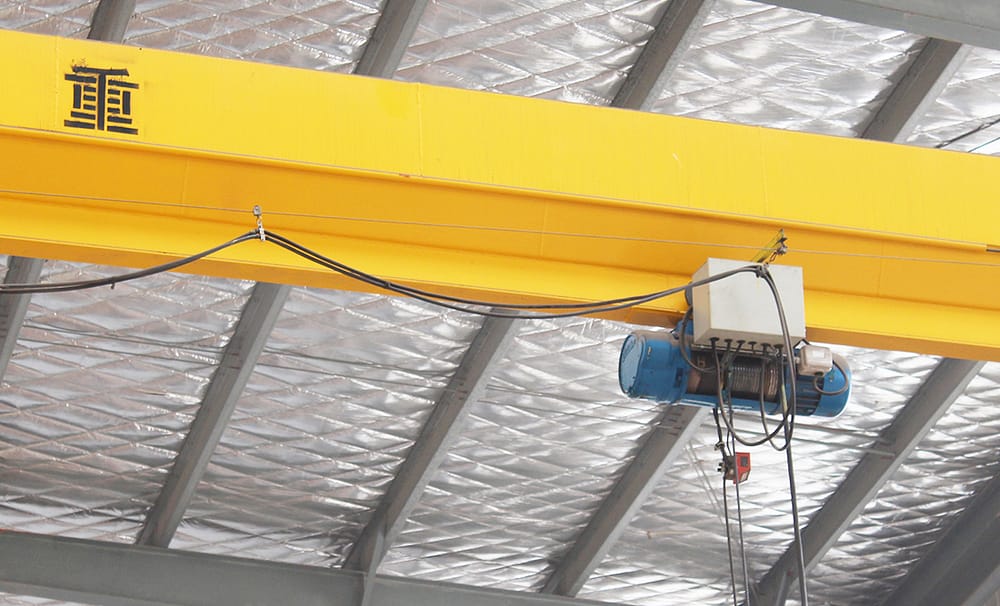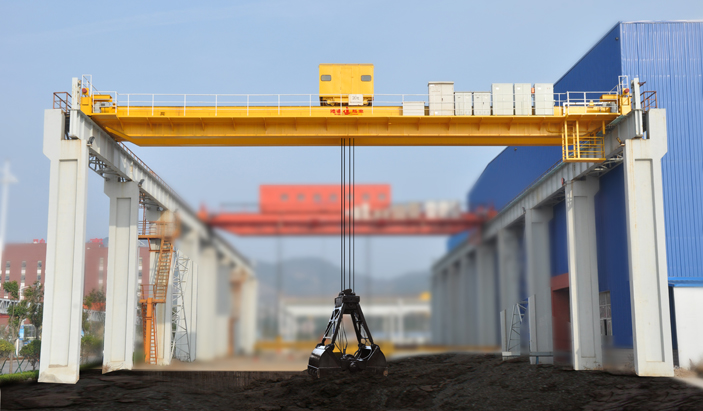How To Stop Overhead Crane From Swinging
Overhead cranes are an essential part of many industrial operations, but they can also pose a significant safety risk if not used properly. One common problem associated with overhead cranes is swinging, which occurs when the load being lifted moves horizontally, causing the crane to sway back and forth. This article will provide tips and tricks on how to stop overhead cranes from swinging, ensuring that you and your workers stay safe while using these machines.
The Dangers Of Overhead Crane Swinging
Overhead cranes are an essential tool in many industries, allowing for the efficient movement of heavy loads. However, their use can also be dangerous if proper precautions are not taken. One of the most significant dangers with EOT cranes is swinging.
Swinging occurs when a load being carried by the crane swings back and forth, either due to operator error or external factors such as wind. This swinging motion can be unpredictable and difficult to control, often resulting in accidents and injuries.
One of the main dangers of bridge crane swinging is that it can cause the load to collide with other objects, potentially causing damage and injury. For example, if a load swings into a nearby piece of equipment or structure, it could damage both the load and the object it collides with. Additionally, if the load swings into a person, it could cause serious injury or even death.
Another danger of EOT crane swinging is that it can destabilize the crane itself. When a load swings, it creates additional forces on the crane’s structure, which can cause it to tip over or collapse. This can result in catastrophic accidents and injuries to workers in the area.

Importance Of Preventing Overhead Crane Swinging
When a crane swings, it can put the lives of crane operators, other workers on the job site, and nearby civilians in danger. Specifically, here are a few reasons why preventing crane swinging is so crucial:
1. Protect Human Life
One of the most important reasons for preventing bridge cranes from swinging is to protect human life. A bridge crane swinging out of control can cause serious injuries or even fatalities. Workers on the ground could be struck by the load, leading to serious injury or death. Similarly, workers operating the crane could lose control, resulting in a catastrophic accident. By preventing the EOT crane from swinging, we can significantly reduce the risk of accidents and ensure that all workers on the job site are safe.
2. Protect Materials And Equipment On The Job Site
Another critical reason why preventing overhead cranes from swinging is essential is to protect materials and equipment on the job site. The uncontrolled swinging of the crane could cause the load to collide with other equipment or materials, leading to damage or destruction. This can result in significant financial losses for the company and lead to project delays. By avoiding swinging, we can prevent such costly mishaps and ensure that all equipment and materials remain safe and intact.
3. Maintain Productivity And Efficiency On The Job Site
Preventing EOT cranes from swinging also helps maintain productivity and efficiency on the job site. When a crane swings uncontrollably, it causes delays as workers must stop working until the crane can be brought back under control. This results in lost time and decreased efficiency. By preventing swinging, we can ensure that work continues uninterrupted, and deadlines are met on time.
4. Legal And Regulatory Compliance
Finally, it’s worth noting that preventing overhead cranes from swinging is essential for legal and regulatory compliance. There are strict safety regulations in place that mandate the safe use of overhead cranes. If a company fails to comply with these regulations and an accident occurs, it could face significant legal and financial consequences. Thus, by ensuring that overhead cranes are used safely, companies can avoid such penalties and maintain compliance with safety regulations.
Understanding The Causes Of Overhead Crane Swinging
Before we discuss how to prevent swinging, it’s important to understand the causes of this problem. Some of the most common reasons why bridge cranes swing includes:
1. Overhead Crane Uneven Or Unbalanced Loads
Uneven or unbalanced loads are one of the most common causes of overhead crane swinging. When a load is not evenly distributed, it can create an imbalance that can cause it to swing back and forth as the crane moves. This swinging motion can be dangerous and potentially cause damage to the crane, the load, or both. Factors that contribute to uneven or unbalanced loads include uneven weight distribution, improper rigging, and inadequate information about the load being lifted.
2. Wind Or Other Environmental Factors
The wind is one of the most common environmental factors that can cause an EOT crane to swing. Even a light breeze can exert force on a suspended load, causing it to sway back and forth. In areas with high winds, this can be especially problematic, as the wind can create significant movement in the load and the crane itself. Strong gusts of wind can push the crane and its load off course, causing it to swing uncontrollably.

3. Overhead Crane Operator Unskilled
The unskilled operator is another potential cause of bridge cranes swinging. Operating an overhead crane requires a certain level of skill, knowledge, and experience. If an operator is unskilled or inexperienced, they may not be able to control the movements of the crane effectively, leading to swinging. For example, If an unskilled operator on how to operate an overhead crane, they may not be aware of the best practices for controlling movement and preventing swinging. This can lead to unsafe lifting and movements of loads that result in swinging.
4. Mechanical Failure
Mechanical failure is another potential cause of overhead crane swinging. Cranes are complex machines with many moving parts, and any failure of these components can lead to instability and swinging. Here are some common mechanical failures that can cause EOT crane swinging: Worn or Damaged Brakes, Faulty Hoist Controls, Broken Sheaves or Pulleys.
Tips And Tricks For Preventing Overhead Crane Swinging
Preventing crane swinging involves several measures, including:
1. Proper Load Balancing
One of the tips for preventing overhead cranes from swinging is proper load balancing. When lifting a load, it is important to ensure that the weight is evenly distributed across the crane’s hoist ropes. An unbalanced load can cause the crane to swing, as the weight shifts from side to side. To prevent this from happening, it is important to determine the centre of gravity of the load and position it accordingly. This can be done using mathematical calculations or by using tools such as load cells.

2. Wind Speed Monitoring
Wind speed is one of the primary causes of crane swinging. Therefore, it is crucial to monitor wind speed before commencing any lift operation. If the wind speed is above the recommended limit, the crane operator should suspend the operation until the winds have calmed down.
3. Proper Training Of Overhead Crane Operators
Crane operators must be properly trained on how to operate the crane safely and effectively. This includes understanding load limits, proper rigging techniques, and how to prevent swinging. Operators should also be trained on how to identify potential hazards and how to respond in emergencies. Proper training can significantly reduce the occurrence of accidents caused by crane swinging.
4. Regular Maintenance And Inspection
Overhead cranes should be inspected regularly to ensure that they are in good working condition. This includes checking the hoist ropes for signs of wear or damage, inspecting the crane’s structure for signs of corrosion or cracks, and testing the brakes and other safety features. Regular maintenance can prevent equipment failure, which is a common cause of crane swinging.
5. Use Anti-Sway Devices
A crane anti-rocking device is a safety mechanism used to prevent cranes from swaying or rocking excessively during operation. This device works by using sensors to detect any movements of the crane and then automatically adjusts the crane’s movements to counteract them, ensuring that the crane remains stable and safe.
These devices can be either mechanical or electronic, Commonly used are electrical anti-sway systems and inverted figure-of-eight wire rope anti-sway systems. The electrical anti-sway system can reduce the sway by more than 90%, increase productivity by more than 30% and can be precisely positioned in a shorter period, reducing the work intensity of the operator, improving safety and extending the life of the crane. The inverted octagonal anti-sway system is easy, economical and effective to operate.
Swinging overhead cranes can cause significant safety risks in industrial settings. By understanding the causes of swinging and implementing the tips mentioned above, you can prevent this problem from occurring and ensure the safety of your workers.
Send Your Inquiry
- Email: sales@hndfcrane.com
- WhatsApp: +86-191 3738 6654
- Tel: +86-373-581 8299
- Fax: +86-373-215 7000
- Add: Changnao Industrial District, Xinxiang City, Henan Province, China









































































